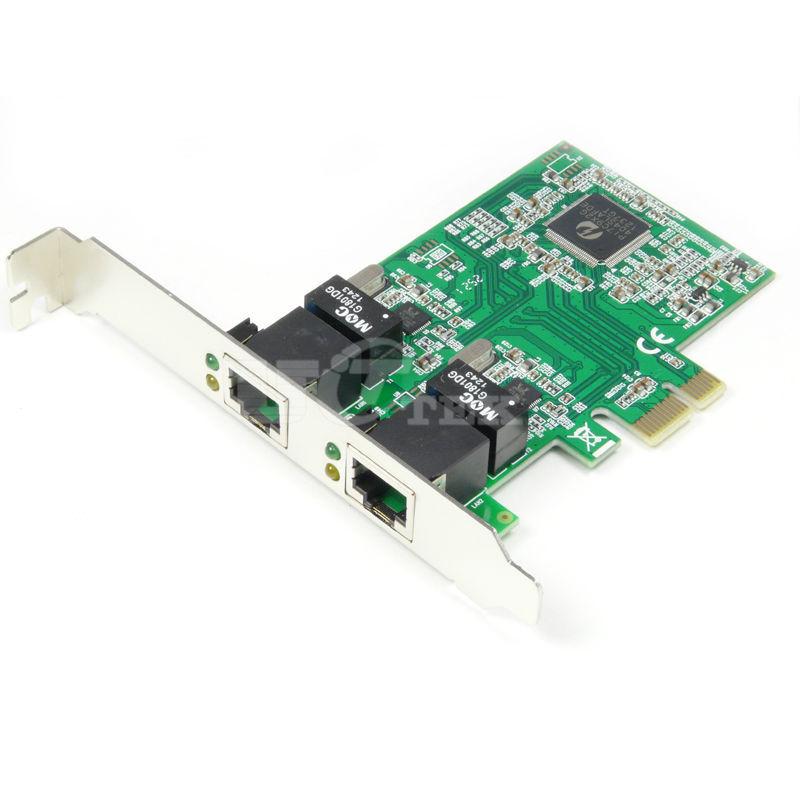- Related articles
- Optical Transceivers for Cisco WS-C2960+24LC-L Switch
- Optical Transceivers for Cisco WS-C3560G-48PS-S Switch
- What is Mini PCI Express Network Card?
- All Cisco DWDM-XENPAK-60.61's information (List price, Specs, Datasheet PDF, Compatibility
- Difference between XENPAK and SFP+
- Optical Transceivers for Cisco SG500-52MP-K9-G5 Switch
- Applicable to 100BASE-LX10 Standard Optical Transceiver Models
- Installation of Fiber Optic Cable
- Applicable to 1000BASE-EX Standard Optical Transceiver Models
- All Cisco MGBLH1's information (List price, Specs, Datasheet PDF, Compatibility matrix)

A Network interface card, NIC, or Network card is an electronic device that connects a computer to a computer network, usually a LAN. It is considered a piece of computer hardware. Today, most computers have network cards.
Network cards let a computer exchange data with the network. To achieve the connection, network cards use a suitable protocol, for example CSMA/CD. Network cards usually implement the first two layers of the OSI model, that is the physical layer, and the data link layer. Today, most network cards use Ethernet.

1000 mbps Network Card
The PCI-based 1000 Mbps Gigabit Ethernet Network Adapter Card provides a simple connection to a Gigabit Ethernet network, and is fully compatible with IEEE 802.3, 802.3u, 802.3ab and 802.3x standards.
Suitable for any PCI-enabled client, server or workstation, the Gigabit Ethernet Network Adapter Card supports high performance dual channel networking and maximum data transfer speeds of 1000Mbps in each direction (2000 Mbps total) - up to ten times faster than 10/100 Ethernet.
Compatible with a broad range of operating systems, including Linux, Windows 10, 8/8.1, 98SE, ME, 2000, XP, XP-64bit, Vista, Vista-64bit, 7, 7-64bit as well as Mac OS 10.4, this high quality PCI Gigabit NIC includes an optional low profile bracket that makes it easy to install the card in a small form factor/low profile computer case/server.
Difference between 100mbps and 1000mbps Network Card
The biggest difference between the different types of Ethernet is of course in data speed. Gigabit Ethernet also improves on available bandwidth and interference to give improved performance in all areas.
Each type of Ethernet generally allows up to 100 meters per cable run although the exact length and speed available at each segment will vary depending on the condition of cable that you use.
When it comes to cables, Fast Ethernet generally uses Cat 5 or Cat 5e cables while Gigabit Ethernet will use Cat 5e or Cat 6 Ethernet cables. All cables are backwards compatible although the network will be limited to the speed of the slowest cable.
It should be mentioned that nowadays 10Mbps Ethernet is almost not used at all. 100Mbps is fairly common and standard in many places although 1000Mbps is becoming more and more common.
Summary
Naturally the faster the links in your network, the higher the performance, and for this reason we recommend that you use gigabit Ethernet as much as possible, especially when switches are being linked together. Many Dante enabled devices use Gigabit Ethernet interfaces, for this reason it is a good idea to use gigabit switches throughout your Dante network.





































































